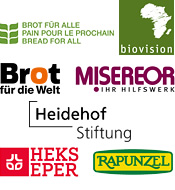News
06.01.2017 | permalink
Smallholders produce 55% of the planet’s food calories, study finds

Smallholder farmers in South and East Asia, sub-Saharan Africa and Latin America are responsible for more than 70% of the food calories produced in these regions, new research shows. A study published by researchers at the University of Minnesota in the journal Environmental Research Letters provides comprehensive information about the number, location and distribution of small farms worldwide. It also includes a map which illustrates the distribution of small, medium and large farms across most world regions. The scientist said that despite the recent spotlight on small farms and increasing consensus on their importance, detailed information on location and size of smallholder farms is virtually absent. “This map is a first step toward a better understanding of where and how smallholder farming can be sustainable for both landscapes and livelihoods,” said Leah Samberg, lead author of the study and scientist with the University of Minnesota’s Institute on the Environment. The researchers said that smallholders and family farms are crucial to feeding the planet and they highlighted that successful policies aimed at alleviating poverty, boosting food security and protecting biodiversity and natural resources depend on the inclusion and participation of small farmers. The researchers therefore hope that the map will fill this knowledge gap and help implement effective agricultural, development, and land use policies. “Combining both agriculture and household survey data creates a map that is a critical piece of the puzzle for targeting the billions of dollars invested in programs to improve people’s lives,” said Paul West, one of the co-authors. The scientists used census data from millions of households in dozens of countries to identify farming households and average farm sizes across much of the world. They identified 918 places in 83 countries in Asia, sub-Saharan Africa and Latin America where there are fewer than 5 hectares of agricultural land per farming household. These smallholder hotspots are home to more than 380 million farming households, make up roughly 30% of the agricultural land are key sources of many important agricultural commodities. Within the 83 countries studied, units with a mean agricultural area of five hectares or less account for more than half of the production by mass of eight staple crops: rice, groundnut, cassava, millet, wheat, potato, maize, barley, and rye. According to the authors this illustrates the specific importance of smallholder production for food security. Smallholders in the 83 countries covered by the study in the three regions were responsible for more than 70% of the food calories produced in these regions, and produced 55% of the food calories produced globally. The calories produced by small farms with less than five hectares varied between regions. In Asia, they accounted for 90% of food calories in the region while smallholder units produce half of food calories in sub-Saharan Africa. This study was only a first effort to make use of the rich datasets, said lead author Leah Samberg: “We envision numerous future applications of this farm size product in combination with other variables related to food security, natural resource use and human well-being that will further increase our understanding of the dynamics of small farms and the livelihoods of those who depend on them.” (ab)

